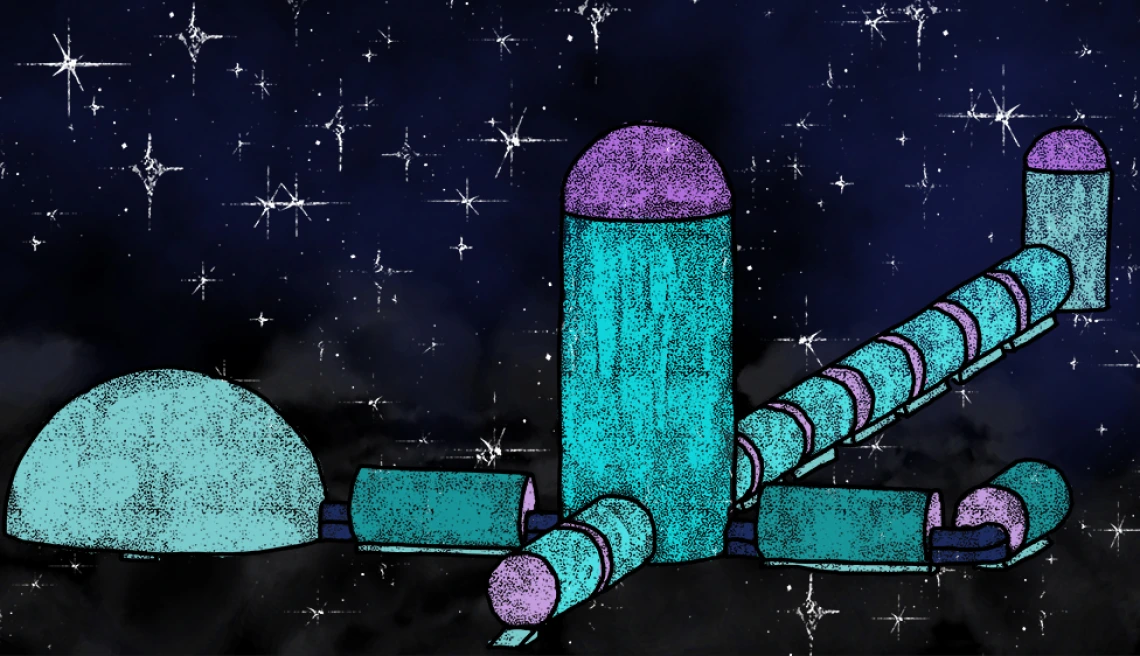Totally Tubular
University Engineers propose Solar-Powered Lunar Ark as ‘global Insurance policy.’

University of Arizona researcher Jekan Thanga has created a model for a solar-powered “ark” on the moon to store cryogenically frozen seed, spore, sperm and egg samples from 6.7 million Earth species. His scientific inspiration came from the biblical tale of Noah's Ark.
The lunar ark concept includes solar panels, at least two elevator shafts and cryogenic preservation modules.
“Earth is naturally a volatile environment,” says Thanga, a professor of aerospace and mechanical engineering in the College of Engineering. “Because human civilization has such a large footprint, if it were to collapse, that could have a negative cascading effect on the rest of the planet.”
Climate change, he added, is another concern: If sea levels continue to rise, many dry places will go underwater — including the Svalbard Global Seed Vault in Norway, which holds hundreds of thousands of seed samples to protect against accidental loss of biodiversity. Thanga and his team believe storing samples on another celestial body reduces the risk of biodiversity being lost if an event were to cause total annihilation on Earth.
The Lunar Tube Network
Scientists discovered a network of about 200 lava tubes just beneath the moon’s surface in 2013. These structures formed billions of years ago when streams of lava melted their way through soft rock and formed underground caverns. They are about 80 to 100 meters deep and measure 100 meters in diameter. Untouched for an estimated 3 billion to 4 billion years, the tubes could provide shelter from solar radiation, micrometeorites and surface temperature changes.
The idea of developing a human settlement on the moon has been around for hundreds of years, and the lava tube discovery renewed the space community's enthusiasm for the concept. But the moon isn’t a hospitable environment for humans to spend extended periods. There is no water or breathable air, and the temperature is about minus 25 degrees Celsius, or minus 15 degrees Fahrenheit.
But those same features make it a great place to store samples that need to stay cold and undisturbed for hundreds of years at a time.
Building a lunar ark is no small undertaking, but, based on some “quick, back-of-the-envelope calculations,” Thanga says it's not as overwhelming as it may sound. Transporting about 50 samples from each of 6.7 million species would require about 250 rocket launches. It took 40 rocket launches to build the International Space Station. “It’s not crazy big,” Thanga says. “We were a little bit surprised about that.”
